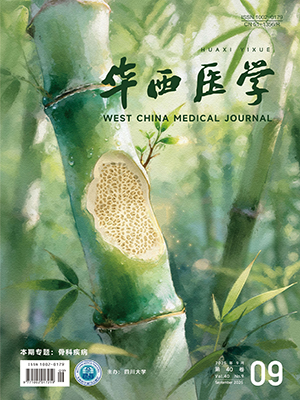| 1. |
Qiao F, Huang W, Zong Z, et al. Infection prevention and control in outpatient settings in China-structure, resources, and basic practices. Am J Infect Control, 2018, 46(7): 802-807.
|
| 2. |
盛玉慧, 张印兰, 刘庆明. 标准化持续质量管理在医院感染管理中的应用价值分析. 中国标准化, 2022(2): 126-128.
|
| 3. |
刘菲. 基于循证的感染控制流程在门诊医院感染管理中的应用分析. 中国社区医师, 2023, 39(3): 160-162.
|
| 4. |
陈萍, 王燕, 段晓菲, 等. 风险评估在传染病医院外科医院感染控制中的应用. 华西医学, 2017, 32(3): 339-343.
|
| 5. |
李六亿, 徐艳, 贾建侠, 等. 医院感染管理的风险评估分析. 中华医院感染学杂志, 2016, 26(11): 2607-2610.
|
| 6. |
Uguen M, Daniel L, Cosse M, et al. Influence of risk assessment inspection on the prevention of nosocomial infection. J Hosp Infect, 2016, 93(3): 315-317.
|
| 7. |
国家卫生健康委. 国家卫生健康委关于印发《三级医院评审标准(2022年版)》及其实施细则的通知. 中华人民共和国国家卫生健康委员会公报, 2022(12): 15.
|
| 8. |
王允琮, 王力红, 赵霞, 等. 门诊医护人员呼吸道感染风险评估体系的构建. 中国感染控制杂志, 2021, 20(3): 227-231.
|
| 9. |
李六亿, 徐艳. 医院感染管理的风险评估. 中国感染控制杂志, 2016, 15(7): 441-446.
|
| 10. |
陈美利, 景照峰, 黄合田, 等. 风险评估联合PDCA改善医院感染管理效果研究. 中国感染控制杂志, 2022, 21(5): 462-468.
|
| 11. |
徐艳, 杨怀, 张曼, 等. 外科系统医院感染管理的风险评估研究. 中华医院感染学杂志, 2017, 27(8): 1890-1892.
|
| 12. |
Sarkar MK, Arun Babu T, Dey S, et al. Front-line vs second-line healthcare workers: susceptibility prediction to COVID-19 infection in a tertiary care teaching institute. Cureus, 2023, 15(4): e37915.
|
| 13. |
Conroy G. What’s behind China’s mysterious wave of childhood pneumonia?. Nature, 2023: 27.
|
| 14. |
Arteche-Eguizabal L, Corcuera-Martínez de Tobillas I, Melgosa-Latorre F, et al. Multidisciplinary collaboration for the optimization of antibiotic prescription: analysis of clinical cases of pneumonia between emergency, internal medicine, and pharmacy services. Antibiotics (Basel), 2022, 11(10): 1336.
|
| 15. |
Zhang W, Qi X, Yang L, et al. Mpox patients’ experience from infection to treatment and implications for prevention and control: a multicenter qualitative study in China. J Med Virol, 2024, 96(1): e29338.
|
| 16. |
Arosio AD, Russo F, Coden E, et al. Performing otolaryngological outpatient consultation during the Covid-19 pandemic. Am J Otolaryngol, 2021, 42(2): 102873.
|
| 17. |
Wang J, Tao Z, Zhang K, et al. Infection control-based construction of a fever outpatient routine management model. Emerg Med Int, 2022, 2022: 2902800.
|
| 18. |
吕倩, 赖晓全, 徐敏, 等. 基于医疗失效模式与效应分析法的发热门诊医院感染风险管理. 中华医院感染学杂志, 2022, 32(12): 1861-1865.
|
| 19. |
Dong Q, Kuria A, Weng Y, et al. Impacts of the COVID-19 epidemic on the department of stomatology in a tertiary hospital: a case study in the general hospital of the central theater command, Wuhan, China. Community Dent Oral Epidemiol, 2021, 49(6): 557-564.
|
| 20. |
干春兰, 陶思源, 王妍潼, 等. 新型冠状病毒肺炎疫情期间四川大学华西医院门诊三级预检分诊管理优化探索. 华西医学, 2021, 36(3): 306-310.
|
| 21. |
Bredin D, O’Doherty D, Hannigan A, et al. Hand hygiene compliance by direct observation in physicians and nurses: a systematic review and meta-analysis. J Hosp Infect, 2022, 130: 20-33.
|




